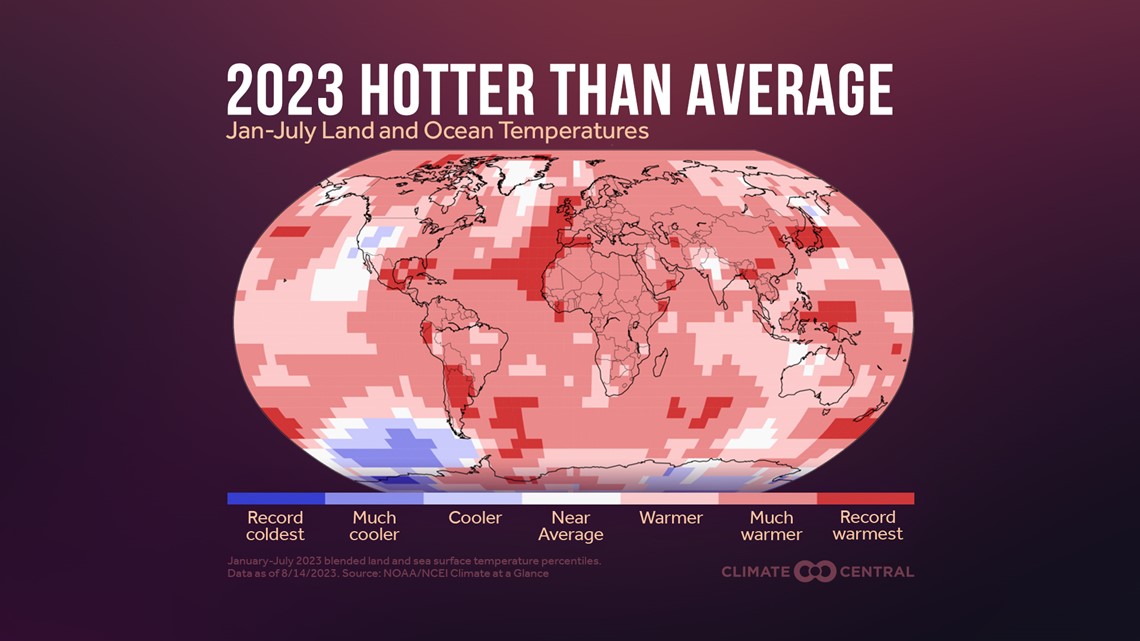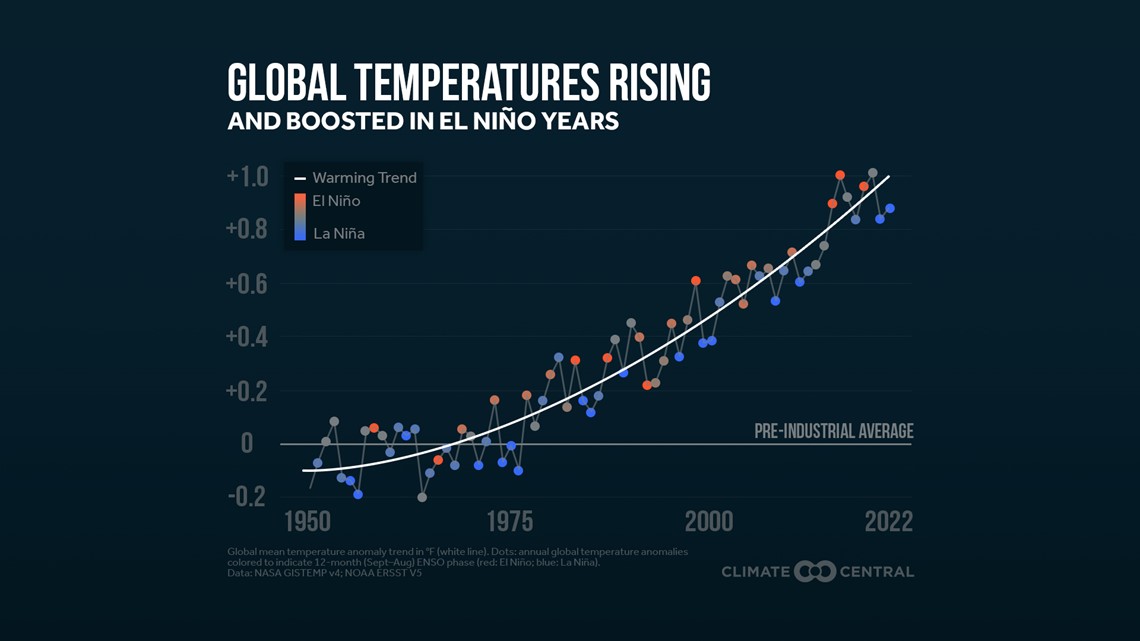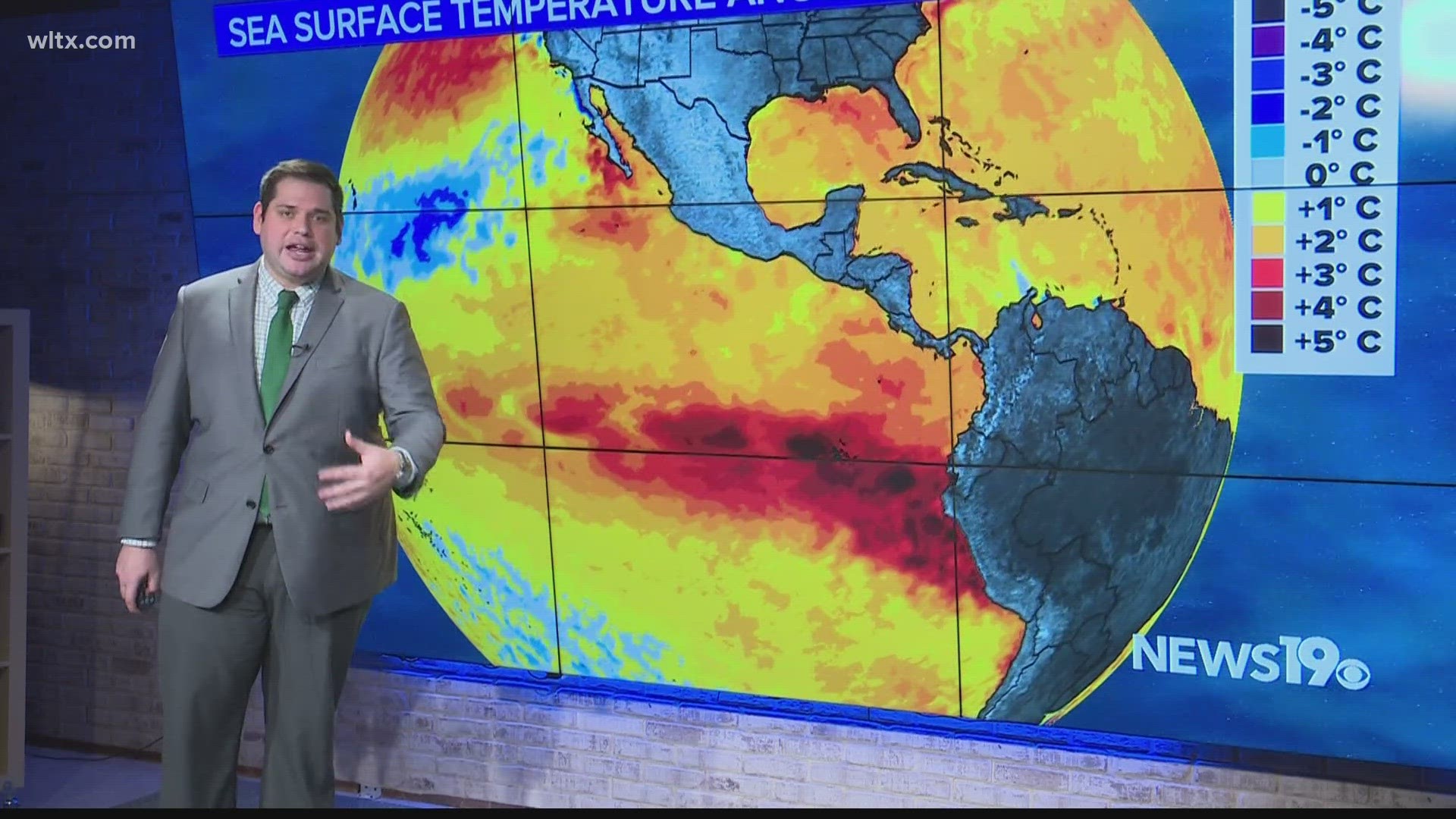COLUMBIA, S.C. — Earlier this week the National Aeronautics and Space Administration (NASA) and National Oceanic and Atmospheric Administration (NOAA) released that July ended up as the hottest July on record globally.
While records like this have been set recently this month also ended up as the hottest month in modern history. This is a really big deal because it includes 174 years of direct temperature measurements with the use of thermometers.
According to their measurements, NOAA says that the global ocean temperatures were 2.02°F above average. This was the first time that a July temperature averaged 1°C or more above the average.




A very large reason for this is global ocean cycles like El Nino and La Nina which warm and cool our Oceans along with the North Atlantic Oscillation which has positive and negative cycles. ENSO (El Nino) can cycle through a few years while the NAO can take decades. Sometimes these cycles sync up like this year and can enhance any global heat that is related to climate change.


According to NOAA, this enhanced heat is on full display. Over the past 4 months, we have seen global ocean temperatures being set every single month which is part of a concerning trend including lower polar ice amounts. The Antarctic is currently seeing some of the least ice coverage during their winter on record.
We will need to watch our trends going into the end of the year, but as things stand 2023 could end up as one of the hottest years in modern history for the Earth.

